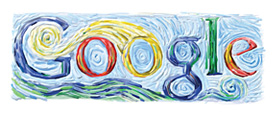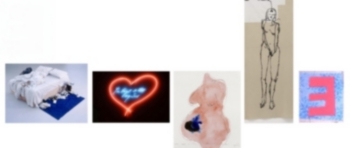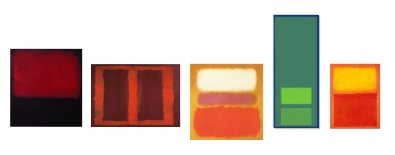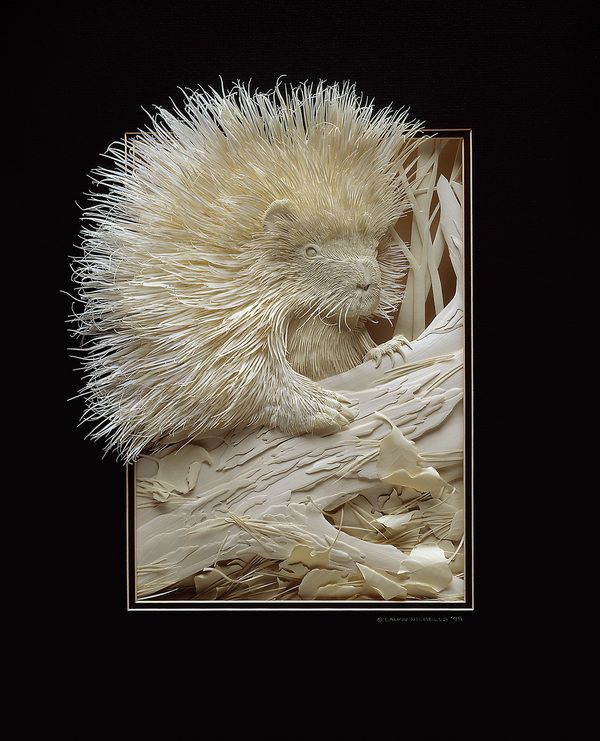To me, art is something that speaks to me. It does not need to be something that I like or, indeed, something that other people like. In fact, there are works of art that I don’t really like at all that have nevertheless drawn me into a kind of dialogue - Tracey Emin’s ‘My Bed’ is the example that readily springs to mind – and that’s the quality that, to me, makes all the difference. Pretty pictures are one thing; art is another.
Over the years, I have learned a lot just by contemplating various works of art and today, I thought I would share with you seven artists who all, one way or another, have had an impact on my way of thinking. From the sublime to the picturesque (art historian joke), here are some of my favourite and not so favourite artists and how their work spoke directly to me.
Van Gogh – Be Persistent
Let me confess that I was late into appreciating the work of Vincent Van Gogh. I remember once, when I was a quite young, seeing a self-portrait he had done and at the time, I thought he had no talent. Apparently, I was not the only person to think he had no talent; almost everybody who saw his work during his life, thought the same thing. He only managed to sell one painting, despite being prolific. It was later in my own life that I looked afresh at his pictures and saw something else in them. He was a man who painted with a certain recklessness, perhaps a reflection of the way he lived his life, and he never conformed to what he felt the art world wanted.
But the story of Van Gogh’s life really is a tragedy. He died an agonising death at the age of just 37 after shooting himself in the chest, never achieving his true potential within his lifetime despite having completed around 900 paintings. At the time, only his brother, Theo, really saw him as the great artist for which he would later become recognised. The lesson for me is that sometimes, you just have to believe in yourself. When you have your mission and goals quantified, you just have to keep going, be persistent and finish the race.
Escher – Appreciate the Views of Others
The work of MC Escher is famous for such idiosyncrasies as never-ending staircases, water that flows uphill and rooms with walls and ceilings all mixed up. It is the kind of thing I can look at for hours. In fact I have two Escher prints in my study. They used to grace the walls of the classroom where I taught my professional development workshops. I deliberately chose them because they challenge us to look at things differently. We can settle, mentally, on one perspective and then we become forced to see another. And yet, we recognise that no one perspective is the right one.
It is a valuable lesson to take into life. When we are dealing with other people, they are very likely to see things differently from ourselves. Their perspective on the issue might be completely different to our own, but they have a right to their views and opinions. Even if I think that I have formed a correct view of reality, it is helpful to recognise that there may yet be other perspectives I have not explored. It also helps to remind me not to get too attached to my own viewpoint. It is healthy to welcome all views and perspectives on issues.
Dali – There is Always Something We Can Agree On
That Salvador Dali was a genius, there is no question. Today, we are still finding minute, intricately painted elements of detail, previously undiscovered within his astonishing masterpieces; he was a wild eccentric who painted in more detail than even the camera might capture. I used his famous melting watches picture ‘The Persistence of Memory’ as the frontispiece for my degree dissertation on the subject of writing software that mimicked the forgetfulness of the brain. When I visited the Tate Modern, I was fortunate enough to see his ‘Lobster Telephone’, something more worthy of Tracey Emin or Damien Hirst, I thought. It is a work that is diametrically opposed in all points (except that it qualifies as surrealism) to his paintings.
From Dali I learned that many things in life turn out to be circular and not linear. At opposite ends of any construct are positions that are apparently so far apart, and yet can become almost indistinguishable from each other. In his case, if you arranged a million people with different levels of intelligence from idiot at one end to genius at the other, you would find that the genius is only a gnat’s nadger away from being an idiot. And I have found that this principle applies to many other things in life too. A recent debate between Rowan Williams, the Archbishop of Cantebury (creationist) and Richard Dawkins (evolutionist), for example, showed that, whilst they occupy opposite ends of the spectrum on the question of God, they are very close together in terms of their beliefs about the creation process itself.
Monet – Understand that Everything Changes
Monet is credited with having painted the first impressionist painting, ‘Impression Sunrise’. We had a print of it in the dining room at our last house. Apparently, it took him only about thirty minutes to produce, but in doing so, he started an art movement! Impressionism is today one of the most loved genres in painting but, at the time, the art critics derided it. Writing in a review that featured the work, art critic Louis Leroy, said of it, “Wallpaper in its embryonic state is more finished than that seascape.”
The acceptance of the work of the impressionists teaches me that, whilst we might like to think that such things are constants, standards constantly change. What is good today may be bad tomorrow and vice versa. That, in turn, encourages me to not be too damning in my condemnation of anything. Who would want to be remembered as the man who did not appreciate impressionism or the guy who rejected Harry Potter or the man who turned down The Beatles?
Tracey Emin – Walk Down a Different Street
Let me say right up front that I do not admire the work of Tracey Emin. However, she has been the cause of a lot of discussion for me over the years, so that’s why I have included her in my list of artists that have impacted my thinking. You will no doubt recall her entry (My Bed) for the 1998 Turner Prize. ‘My Bed’ featuring empty booze bottles, fag butts, stained sheets and worn panties was exhibited at the Tate Gallery as one of the works actually short-listed for the prize.
Much of modern art is concerned with the dialogue around the question of: what is art? And, to me, this piece is another example. When people first learn of my interest in art, one of the first questions they will ask is: do you like modern art? Often, the conversation gets around to the value of works like Tracey’s. To me the value of something is an entirely different and unrelated question. The value of Tracey’s bed does not derive from its status as a work of art. The law of supply and demand is what dictates its price. Is it art? This piece finally taught me (I can be a slow learner at times) the absolute futility of entering into such discussions.
Rothko – Don’t Judge on First Impressions
At the Rothko Room in the Tate, I sat for a few minutes to get a feel for the effect that his huge canvasses of colour can create in the mind of the visitor. Sitting in that room is not unlike sitting in a cathedral; not to look at, but in terms of its effect. I had a print of Rothko’s ‘Orange and Yellow’ that also hung in the classroom in which I ran my workshops. It was there to challenge people’s ideas about concepts. I would get delegates debating the role of intuition versus logic in personality and in relation to how we make judgements.
At first, I was neutral about the painting, but over the years, I got to quite like it. It became like an old familiar friend; and then, it began speaking to me. Not out loud of course, but in the way that works of art do. I began to realise that there was much more to the painting than the orange and yellow rectangles. It reminds me that first impressions can often be wrong and as a consequence, I try hard not to make snap judgements; especially when it comes to people.
Picasso – Finding Your Voice
A print of Picasso’s ‘Dove of Peace’ hangs on the wall in my study, over my desk. I have always considered it something of an emblem of my journey. My main website is White Dove Books and originally, I wanted to use the icon as my logo. I wrote to the administrators of the Picasso estate at that time and, sadly, they refused permission. But Picasso has always been an inspiration for me. He was a brilliant artist, but did not really find his voice until he co-founded cubism.
The lesson I learned from Picasso is that finding your voice, what Stephen Covey, author of ‘The 7 Habits of Highly Effective People’, calls the ’8th Habit’ is what really makes the difference in life. To find your voice is to live your life purpose; the life you were born to live and, when you can do that, absolutely nothing can stop you.







